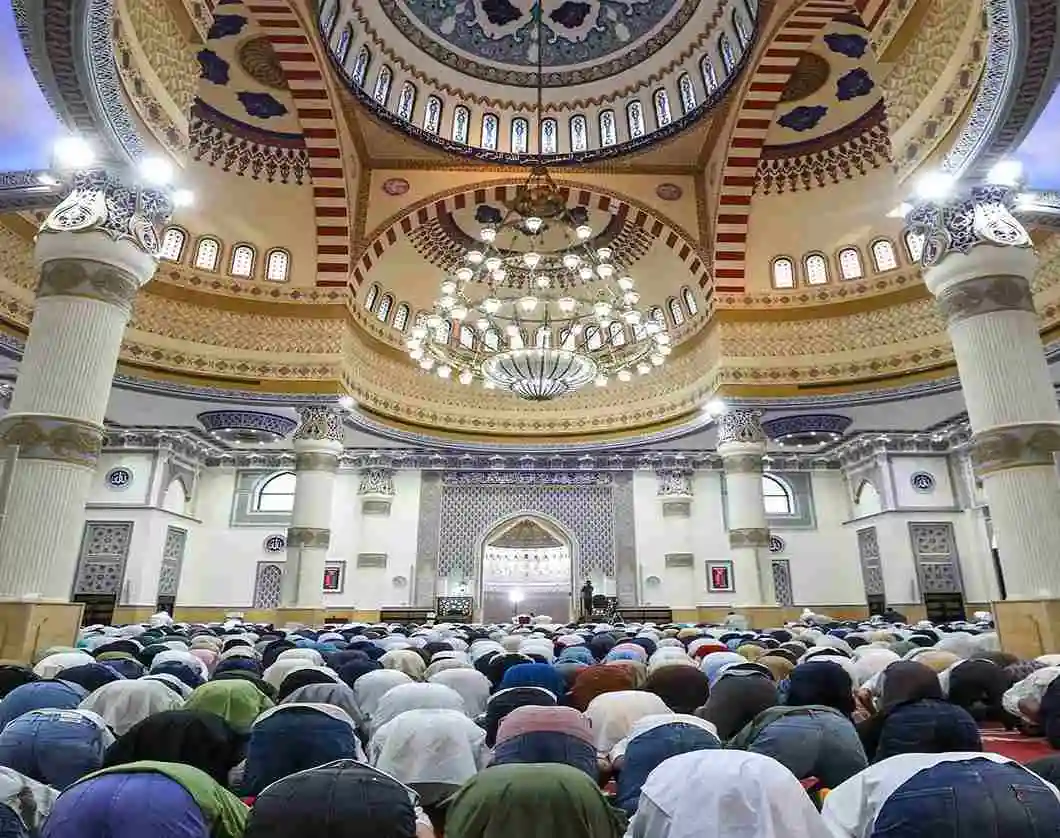Islam, a religion rooted in peace, unity, and compassion, has been a source of spiritual guidance and strength for billions of people around the world. Today, it stands as the fastest-growing religion globally, with an ever-increasing number of people embracing its teachings. From its deep cultural influence to its community-driven values, Islam’s rapid growth is a reflection of its timeless relevance in the modern world.
Islam is a religion that continues to inspire and attract millions of people worldwide. With over 1.9 billion followers, it is the second-largest religion in the world, and its remarkable growth over the years is a testament to its deep-rooted influence, spiritual appeal, and timeless values. Today, Islam stands as the fastest-growing religion globally, and the reasons for this growth are as diverse as the people who embrace it.
But have your wondered why is Islam growing so quickly? Let’s read this blog further to explore the key factors that contribute to this growth and look at some statistics that highlight the trend.
1. Strong Family Values and High Birth Rates
One of the most important reasons behind Islam’s rapid growth is the strong family values emphasized within the religion. Family is the cornerstone of Islamic life, and in many Muslim-majority countries, larger families are celebrated. The result is higher birth rates. According to the Pew Research Center, the Muslim population is growing at a rate of about 1.8% per year, which is faster than the global average for other religious groups.
Countries in regions like Africa, Asia, and the Middle East are experiencing significant population growth. In places like Sub-Saharan Africa, where birth rates remain high, the Muslim population is projected to increase substantially. This vibrant growth in Muslim-majority countries plays a vital role in Islam’s global expansion.
2. Migration and Islam’s Global Reach
Migration is another key factor fueling the spread of Islam. As people move from Muslim-majority countries to other parts of the world, such as Europe, North America, and Asia, they bring their faith with them. Over the last few decades, this migration has led to a noticeable rise in Muslim populations in traditionally non-Muslim regions.
Between 2010 and 2050, the Muslim population in Europe is projected to grow by 6%, driven by migration and higher birth rates among Muslim families. In North America, Islam is projected to become the second-largest religion by 2050, with an expected increase of over 60% in the Muslim population. This global mobility ensures that Islam’s teachings continue to resonate across different cultures and geographies.
3. Conversions and Personal Connections
In addition to migration and birth rates, conversion to Islam is also an important factor. Many people from diverse backgrounds are discovering Islam’s message of peace, equality, and spiritual fulfillment. Studies suggest that each year, thousands of individuals convert to Islam, particularly in countries like the United States, Canada, the UK, and parts of Europe.
In the U.S., for example, studies estimate that around 20,000 people convert to Islam each year. Conversion to Islam can be a result of many factors, including an interest in the faith’s teachings, a desire for a structured and disciplined lifestyle, or a personal search for spiritual fulfillment.
Conversion to Islam is often driven by personal spiritual journeys, as people seek a deeper connection with their faith and find comfort in Islam’s holistic approach to life. The emphasis on charity, community, and personal growth makes Islam an attractive option for many seeking a meaningful spiritual path.
4. A Young and Growing Population
Another factor contributing to the rapid growth of Islam is its youthful demographic. The median age of a Muslim worldwide is around 24 years, significantly younger than other religious groups. This youthful population means that Muslims are entering their reproductive years at a higher rate, which contributes to Islam’s population growth.
As younger generations embrace Islam’s teachings and values, they help ensure that the faith will continue to grow and thrive for generations to come. The vibrancy and energy of young Muslims around the world are a vital part of the religion’s future.
5. Geographic Distribution of Muslims
The growth of Islam is largely happening in regions with high fertility rates. According to Pew Research, Muslim populations in countries like Nigeria, Indonesia, Pakistan, and India are increasing rapidly. In fact, India alone is projected to have the largest Muslim population by 2050, surpassing Indonesia.
Interestingly, the Middle East-North Africa (MENA) region, which has the highest percentage of Muslims in the world, also sees substantial growth. The region’s population is expected to grow from 400 million Muslims in 2010 to 600 million by 2050.
6. Islam’s Message of Peace, Justice, and Unity
The enduring appeal of Islam lies in its message of peace, justice, and equality. At its core, Islam is a faith that promotes social harmony, personal integrity, and a sense of global community. The concept of Ummah—the worldwide community of Muslims—provides a powerful sense of belonging and support for its followers.
Islam’s focus on charity and helping others is also a central tenet that resonates with people from all walks of life. The emphasis on giving, kindness, and caring for the less fortunate makes Islam an attractive and uplifting faith, particularly in times of social or personal struggles.
7. Growing Influence and Educational Opportunities
As Islam continues to grow, so too does its influence. The establishment of mosques, Islamic centers, and educational institutions around the world is providing more opportunities for people to learn about Islam. These institutions not only serve as places of worship but also as centers of knowledge, community service, and intercultural exchange.
With its teachings emphasizing monotheism, equality, and social justice, Islam resonates with a large number of people. The religion’s strong sense of community (the Ummah) and its focus on charity and care for the poor also attract many converts. Islamic principles of social justice and its holistic approach to personal, social, and spiritual well-being make it relevant to a diverse global audience.
The growing presence of Islam in educational and cultural spaces also allows for greater understanding and appreciation of the religion. As more people engage with the teachings of Islam, they often find a rich spiritual and intellectual tradition that adds to their personal growth and global perspective.
8. Projections for a Bright Future
Looking ahead, the future of Islam is incredibly bright. According to the Pew Research Center, the Muslim population is expected to grow by 70% between 2010 and 2050, with Islam projected to become the world’s largest religion by the end of the century. The global Muslim population is expected to rise from 24% of the world’s population in 2010 to 30% by 2050.
In regions like Sub-Saharan Africa, the Muslim population is expected to grow from 30% to 40% in just a few decades. Meanwhile, countries in Asia like India and Pakistan will see substantial increases in their Muslim populations, further solidifying Islam’s position as the world’s fastest-growing religion.
Conclusion: Islam’s Enduring Appeal
The growth of Islam is a multifaceted phenomenon driven by strong family values, migration, conversions, a youthful population, and the universal appeal of its message. As the world becomes more interconnected, Islam continues to spread its message of peace, justice, and unity, attracting new followers from every corner of the globe.
Islam’s rapid growth is not just a matter of statistics; it’s a reflection of the profound impact the religion has on the hearts and minds of people worldwide. As Islam continues to inspire millions, it will undoubtedly play a crucial role in shaping the cultural, social, and spiritual landscape of the future.
Islam’s growth is a testament to its resilience and the deep connection it fosters among its followers. Whether through its teachings, its sense of community, or its vision of a better world, Islam remains a powerful and positive force in the lives of billions. Its growth is a beautiful reminder of the timeless relevance of faith and the shared values that unite humanity.






